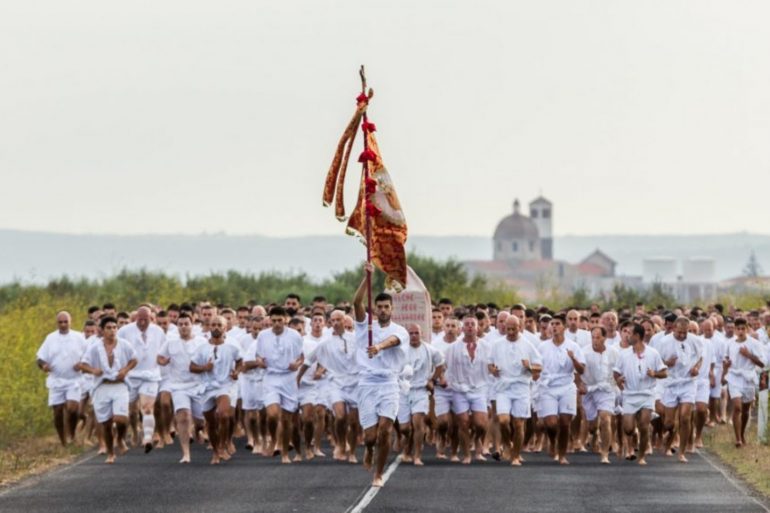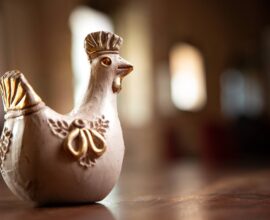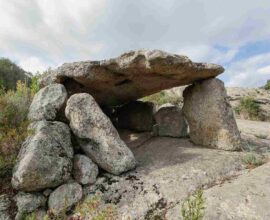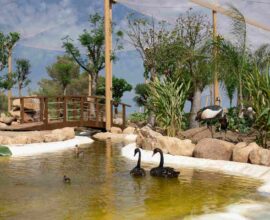The barefoot run: story and program
The barefoot run: the story of an antique tradition
There are many different reasons influencing our choice of destination for vacations: untouched nature, wellness treatments as those offered at Forte Village, or typical local festivities like Sant’Efisio in Cagliari or the Barefoot Run in Cabras.
The antique family, social and religious traditions are strongly rooted in Sardinian territory. It’s a land in which costumes and traditions, knowledge and legends, reflect popular culture, maintaining its charm which, every year, attracts tourists from all over the world.
Among the amazing traditions of the island is the Barefoot Run, it’s quite particular because it involves around 900 men of all ages called curridoris, wearing only a white habit with a rope tied around their waist.
The name comes from the fact that the participants run barefoot for more or less seven kilometers, from Cabras to the small town of San Salvatore di Sinis. While running, they carry a simulacrum of saint Srabadori, representing Christ in his Transfiguration.
The tradition takes place every 1st of September and the race starts at seven thirty in the morning, after mass in the Santa Maria Assunta church in Cabras, so that the runners can reach the little church in San Salvatore where the festivities would have already begun and everyone can enjoy delicious Sardinian wine and food surrounded by nature. The next day the simulacrum is returned to Cabras.
The manifestation has very strict rules: the curridoris are divided in to 14 groups, within each group there are 14 divisions of 5 runners. Seven of them run the first day and seven run the second day, the only decision to be made is who will take the saint to San Salvatore and who will bring it back to Cabras.
The Barefoot Fun: when it all started
The famous festivity in San Salvatore di Sinis, commonly known as the Barefoot Run, began in 1619 when Cabras and the Sinis territory had been invaded by the Saracens who stole the riches of the island, imprisoned the men and took the women.
During one of the invasions, the Calabrian people decided to put the statue of Salvatore in a safe place, to confuse the enemy during this long run they wore branches tied on their bear feet instead of shoes.
The Barefoot’s strategy created a lot of dust while running, giving the impression to the enemy that they were many more than they actually were.
The strategy was successful, the invaders retreated to avoid fighting what seemed a large army.
Since that day, the ritual of the Barefoot Run is repeated every year to remember the miracle in 1619 and worship the saint that saved their village.
The Barefoot Run: the program of 2019
Faith, folklore, tradition, flavors and aromas of Sardinian cuisine, you must enjoy the Barefoot Run at least once in your life, one of the most important religious festivities in Sardinia which takes place on the first weekend of September.
Here is the program for the 2019 edition.
Saturday, 31 August 2019
At 6:30 – Cabras – holy mass in the church of Santa Maria Assunta di Cabras
At 7:30 – Cabras – Barefoot Run: Starting from the church of Santa Maria di Cabras and finishing at the sanctuary of San Salvatore di Sinis
At 19:00 – Village of San Salvatore – Mullet and vernacular feast
At 22:00 Village of San Salvatore – Concert
Sunday, 1 September 2019
At 10.30 – Solemn Procession around the streets of the Village with the venerated simulacrum of San Salvatore. To follow: the solemn holy mass
At 17.30 – Village of San Salvatore – Holy mass in the church of San Salvatore
At 18.30 – Village of San Salvatore – Barefoot Run: Simulacrum of San Salvatore goes back to Cabras brought by the Curridoris, starting from San Salvatore.
At 19,30 (concurrently with the Simulacro going back) – Cabras –Fireworks display at the arrival of the Barefoot Run
At 22,00 – Piazza Stagno in Cabras – Concert






